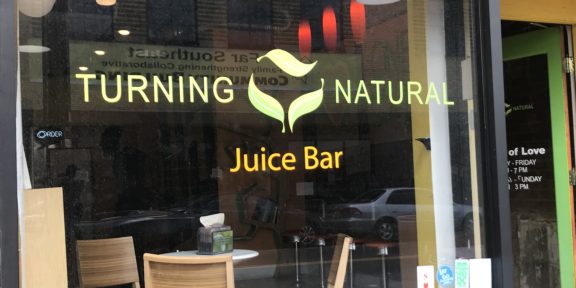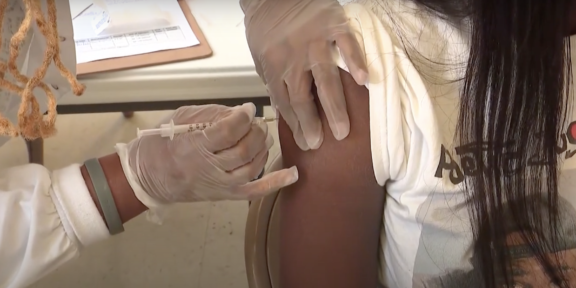By Aaron Shields
From crowded apartments in downtown Washington, D.C. to spacious mansions of the affluent suburbs surrounding the city, the use of opioids is prevalent everywhere in the Nation’s Capital. It is colorblind, destructive, and unrelenting. Its path is like a tornado, destroying everything in its path. All races and social classes have been affected. The public has recognized the problem opioids pose to our youth and has finally decided to help, advocating for more restorative programs as opposed to harsh punishment.
But why now is this drug use called an epidemic? Where is the push to enforce mandatory minimum jail terms for opioid users in affluent communities? In the late 1970s and throughout the 1980s, politicians advocated for harsher sentences for drug users. The Rockefeller Drug Laws, passed in 1973, were the first of many strict laws passed throughout the country in hopes of stopping drug use. These laws, combined with other factors such as racism and over-policing marked the beginning of a mass incarceration of African Americans in inner cities as their neighborhoods–and the residents of color occupying them–were targeted by the police. Many neighborhoods in D.C. experienced a period of terror as police and gangs clashed. “Back then, you could not walk down the street without some sort of fear,” said Richard Darnold, a longtime resident of the District.
Today we see the effects of continued oppression by the government, the lack of restorative programs that employ a treatment approach to restore someone to a drug-free lifestyle, along with the use of media to place a negative portrayal of the African American lifestyle. Areas with high poverty rates are also seeing a sharp spike in drug use. Mark S. Johnson, head of the Department of Family Medicine at Howard Hospital says, “People in areas of high poverty experience a type of nihilism.” Johnson also states that, “Their primary belief is that life is bad and so they turn to drugs or violence.”
Neighborhoods located near the H Street Corridor and Howard University are a prime example of a community affected by drug use. People can be seen openly selling various drugs on street corners. The Howard University hospital is located just 50 yards away from one of the most prominent selling spots on the intersection of Florida and Georgia Avenue. William Strudwich Kann, an emergency medicine physician at Howard University hospital, says, “we see at least five to 10patients that suffer from drug overdoses during the day.”
The sad truth is that these people will not receive any restorative treatment besides the basic treatment they get from the hospital. Additionally, the hospital cannot afford to hold these people for more than a day and often has to discharge them to make room for incoming patients. During our interview Kann stated, “Patients can be discharged at random times such as 3am to make room for incoming patients.
Unfortunately, when these people are sent back to the streets without any restorative treatment or services, they are faced with the possibility of returning to drugs, being picked up by the police and eventually facing jail time for drug possession. According to Johnson, “One of the biggest problems the District faces in dealing with opioid addiction is the lack of long term restoration programs in hospitals and elsewhere.”
Another big issue that the District faces is the lack of access to naloxone, also known as narcan. Mr. Johnson acknowledged this problem by saying, “The District has been criticized for its slow response to the distribution of naloxone, however they have taken steps in order to improve. This year the District purchased 70,000 naloxone kits in an attempt to reduce the number of opioid overdoses.” These kits are planned to be distributed to police officers around the city. While it is a step in the right direction, it seems to be too little too late as the National Institute of Drug Abuse ranked the District third in the United States for drug overdoses in 2018. This is the District’s reality. People are dying and we cannot continue to ignore it.
In Montgomery County, one of the more affluent counties near the District, the situation is entirely different. Montgomery County has an effective Overdose Response Program and has been allowing its residents to purchase Naloxone at any pharmacy without a prescription since 2016. A Maryland state report found that in 2018, opioid related deaths in Montgomery County dropped significantly while deaths in the state as a whole rose. Raymond Crowel, the chief of Montgomery County Behavioral and Health Crisis Services attributes the reduction in deaths to an increase in awareness of the effects of opioids and the availability of drugs to counter these effects.
Montgomery County also continues to be a leader in advocating against the distribution of opioids. In 2018, the county filed a lawsuit against various opioid companies. While the case is still ongoing, it shows how committed the county is its mission to reduce the number of opioid deaths. A Wallethub survey ranked Maryland as number one for most people receiving substance abuse treatment per 100,000 people. Montgomery County can be seen leading the way, as many of its cities such as Bethesda and Rockville provide services to combat opioids while also holding weekly panels to discuss effective ways to end the Opioid Epidemic.
What is interesting, however, is the disparity between laws regarding possession of these drugs It might be interesting to look at the drug laws in both Montgomery County and the District. Scrofono Law, a prestigious law firm in the District, reports that a first time drug offender in D.C. is often given probation while repeat offenders are often given severe penalties such as long prison terms or large fines.
While penalties for drug possession in Maryland are harsher than those in the District, judges and prosecution attorneys in Montgomery County are generally shown to be more lenient towards first time drug offenders. Kush Arora, a Maryland criminal defense attorney, reports that first time offenders in the county “generally do not face jail time for their offenses. Alternatives to this jail time are usually fines and or community service.” Maryland law states that “the possession of any controlled substances other than marijauana in the state is a misdemeanor and is punishable by up to 4 years in jail as well as up to a $25,000 crime.” However, Montgomery County judges are very lenient with these rules and focus more on restoration than punishment even for repeat offenders.
Even though the public has finally acknowledged the destructive effects of opioids, it is necessary that they acknowledge that a combination of over-policing and the lack of restorative treatment in poorer and largely African American communities in the District in regards to opioids has done nothing but worsen the problem. I believe it is essential that the public understand that in this fight against opioids and other drugs needs to be for all races and social classes. The most apparent example exists in the contrast of the effectiveness of the programs in the District and neighboring Montgomery County. We can start by advocating for more restorative programs not only in the District but in communities such as those located near Howard University. Our Nation’s Capital is a symbol of democracy and freedom, but how can Americans support those values when they are ignoring the voices of those who need our help the most.
..




